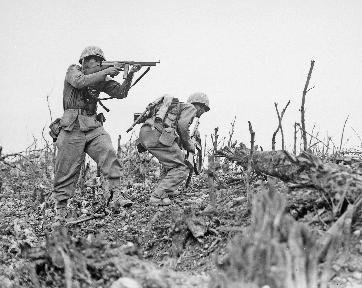Quiz Answer Key and Fun Facts
1. In the very beginning of the summer offensive of 1942, the German forces in the South were still under the control of Army Group South (Heeresgruppe Süd). Who commanded HG Süd until it was eventually split into Army Groups A and B?
2. The summer campaign began with an attack from the Soviets. In May the Soviets tried to encircle Kharkov. Who was the Soviet field marshal in charge of this operation?
3. The original Operation Fredericus called for a double pincer movement to cut off Soviet forces inside the bulge: the 1st Panzer Army was to come from the south, while the 6th Army came from the north. But because the Soviets launched their attack before the German 6th Army could be positioned properly, only the 1st Panzer attacked. Who was the commander of 1st Panzer Army?
4. After the splitting up of Army Group South, AG's A and B, each got different objectives: Army Group A was to advance into the Caucasus Mountains. What was the city Hitler wanted AG A to capture? (It has quite a lot to do with oil).
5. Opposing Army Group A was the Soviet Transcaucasus Front. Who commanded this front? (It was one of Stalin's earliest friends and commander of the 1st Red Cavalry Army in the Russian Civil War).
6. In the original Fall Blau plan, Stalingrad didn't play a big role. As the Germans moved eastward, however, the city became an obsession for Hitler. What reason do many historians think this had?
7. Although the rest of the Eastern Front was stretched quite thin, the Germans still didn't have enough troops for the attack in the South. Many of Germany's allies contributed troops to the 1942 offensive, which of the following armies was NOT at any point during the campaign part of Army Group A or B?
8. The German 6th Army was tasked with capturing Stalingrad. Who commanded it?
9. On the 14 September 1942, the Battle of Stalingrad erupted. Opposing the German 6th Army was the Soviet 62nd Army and, for a short duration, the 64th Army. Who commanded the 62nd?
10. The Battle for Stalingrad dragged on until November. By this time the Soviet bridgehead inside the city was only several square miles. On november 19th, Operation Uranus was launched on the northern flank of the 6th Army. This flank was protected by the Romanian 3rd Army, with a German-Romanian Panzerkorps in the rear as reserve. When this Panzerkorps attempted to reach the front, the 22nd Panzer Division's tanks had mechanical problems. What were these problems?
11. On 20 November 1942 the Southern flank of the German 6th Army was attacked.
Which army protected this flank?
12. As soon as the 6th was encircled, Paulus wanted a meeting with his corps commanders. Strecker, Jänicke, Hube, Seydlitz-Kurzbach and Heitz all wanted to break out of the encirclement. Eventually it was Erwin Jänicke who said what most were thinking. What did he say?
13. As soon as the 6th Army was encircled, Paulus asked Hitler for full authorisation for a retreat if neccesary. Hitler said that it was absolutely forbidden to retreat and said he would get the 6th out of its encirclement and a relief attempt was set up to rescue the doomed Army. The relief operation was codenamed 'Wintergewitter' ('Winter Storm'). One of Germany's greatest strategists was put in command of the operation. Who was he?
14. Wintergewitter was launched in mid December, the Germans inside the city could sometimes hear the noise of the artillery of the Germans trying to rescue them. Around Christmas, the morale inside Stalingrad was extremely high. After that the noise died away and became ever more distant. On New Year's Eve, it was clear that Von Manstein's army could not rescue the 6th Army, and soon thereafter the German morale dropped. The Soviets launched attacks to destroy the encircled Army. On 31 January 1943, Paulus saw that his situation was hopeless and the sacrifices of his men were in vain. On the same day, Hitler did something remarkable. What was it?
15. In the aftermath of Stalingrad, Von Manstein had to make sure Army Group A could be withdrawn from the Caucasus. A city on the river Don played a big part, and was eventually the corridor through which most of AG A escaped. Name this city.
Source: Author
Kenny00
This quiz was reviewed by FunTrivia editor
bloomsby before going online.
Any errors found in FunTrivia content are routinely corrected through our feedback system.

